Brazil securities regulator probes Vale’s filings on dam collapse
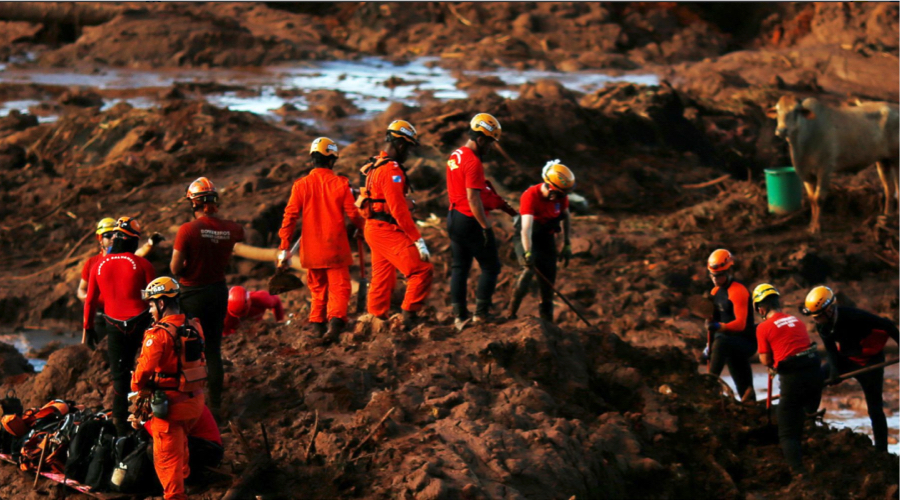
The Brazilian Securities and Exchange Commission (CVM) has launched a probe into mining giant Vale SA’s filings related to the mining dam collapse in the town of Brumadinho, where the collapse of a dam at the company’s Córrego do Feijão mining complex on Friday killed at least 60, while more than 300 missing people are feared dead.
According to local newspaper Valor Economico, CVM is investigating whether Vale responded fast enough to the tragedy in terms of releasing related information it had available. The first reports of the dam burst came after 1 p.m. on Friday and the company’s first securities filing disclosing the rupture was issued after 3:30 p.m., the article says.
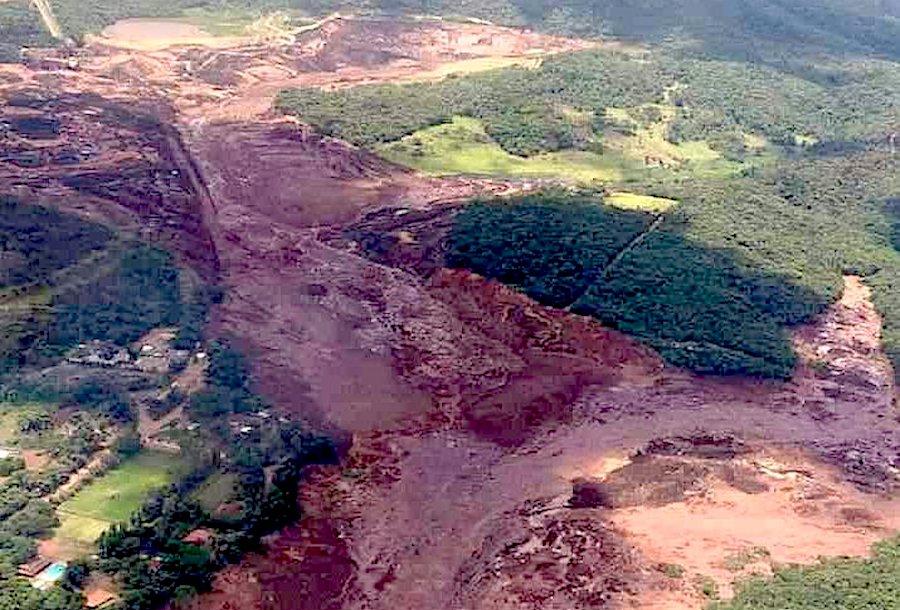
Image: @deputadoadelmo | Twitter.
Vale (NYSE:VALE) shares nose-dived at the start of trading Monday amid a wave of investment bank downgrades, as fines and penalties began to mount.
The stock dropped 21.5% on the Sao Paulo stock exchange, wiping out about $18 billion in market cap.
Adding to the financial uncertainty surrounding the company, the iron ore giant suspended Monday its dividend, share buyback program and bonus payments to top executives in the wake of the deadly dam burst in the Brazilian state of Minas Gerais.
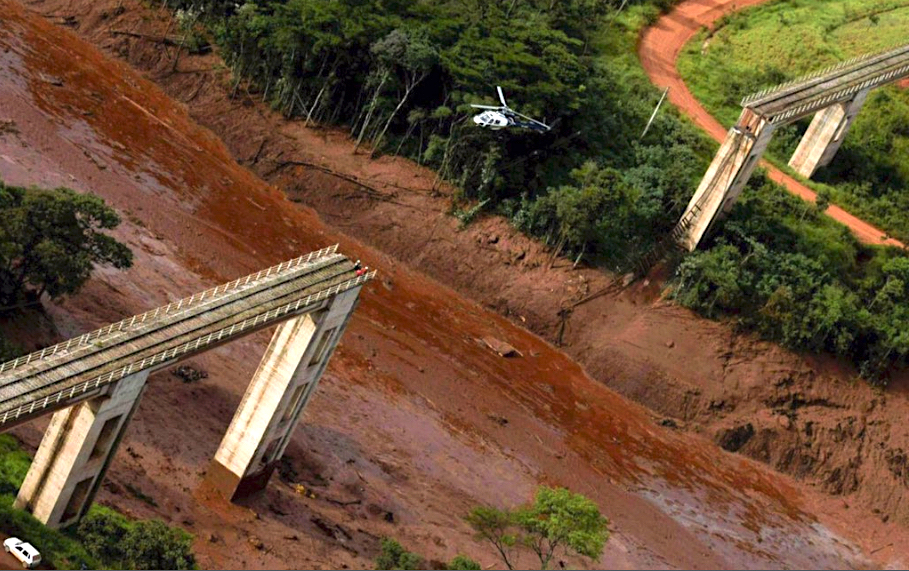
Media were urged not to use drones to avoid collisions with rescue helicopters. (Photo: ABC News via @MidiaNINJA.)
This is the second major tragedy Vale has been involved in about three years. In 2015, another dam at the Samarco mine jointly owned by the company and BHP burst, killing 19 people and causing Brazil’s worst environmental disaster.
President Bolsonaro will have to re-think goal of opening the Amazon and other untouched parts of the country to mining companies.
While the Samarco disaster dumped about five times more mining waste, Feijão’s dam break has already killed more people, as the torrent of sludge hit Vale’s local offices, including a crowded cafeteria, and tore through a populated area downhill.
Being so close in time from the last tragedy, this new fatal accident raises significant questions for Vale, for Brazil’s president Jair Bolsonaro, and the global mining industry, experts agree.
Beyond the devastation and the potential hole in Vale’s coffers, the catastrophic event will trigger increased opposition to Bolsonaro’s plan of unleashing the country’s full mining potential. Especially as he has said he’d do that by easing environmental safeguards and allowing more operations in the Amazon rainforest.

Image: Portal R7.com | Twitter.
The disaster in Minas Gerais could delay the relaunch of Samarco operations, says Jimena Blanco, Head of Latin America Research at Verisk Maplecroft. It’s also very likely to undermine industry efforts to change community perceptions about its respect for environmental regulations, not only in Brazil but in all Latin America, she notes.
Disaster is likely to undermine industry efforts to change community perceptions about its respect for environmental regulations.
.
“We expect community opposition to the industry stemming from concerns over water usage, pollution and soil contamination to increase, both against new and existing projects, in addition to greater scrutiny from civil society and international environmental activists,” Blanco says.
Rescue efforts were suspended about 10 hours Sunday because of fears that a second mine dam in the same area was at risk of failing. An estimated 24,000 people were told to evacuate.
By Monday, Minas Gerais fire department officials had confirmed at least 60 people dead, according to the Associated Press. Since nobody was recovered alive Sunday, they fear that among the hundreds who are still missing there will be very few survivors.
President Bolsonaro flew over the devastated zone on Saturday, later tweeting that it was “difficult to not be emotional before this scene”. He said all efforts were being made to care for survivors and “determine the facts, to demand justice and prevent new tragedies.”

CEO Fabio Schvartsman flies over Brumadinho after dam breach. (Image courtesy of Vale SA. )
The same day, the country’s National Mining Agency on Saturday ordered Vale to suspend operations at the mine and Minas Gerais state prosecutors entered a motion to freeze 5 billion reais ($1.3 billion) in the company’s accounts for handling damages. It’s expected that more funds will be frozen in days to come.
Raquel Dodge, Brazil’s prosecutor-general, said on Monday that Vale needed to be “severely” punished when it comes to paying compensations and that its executives could face criminal charges.
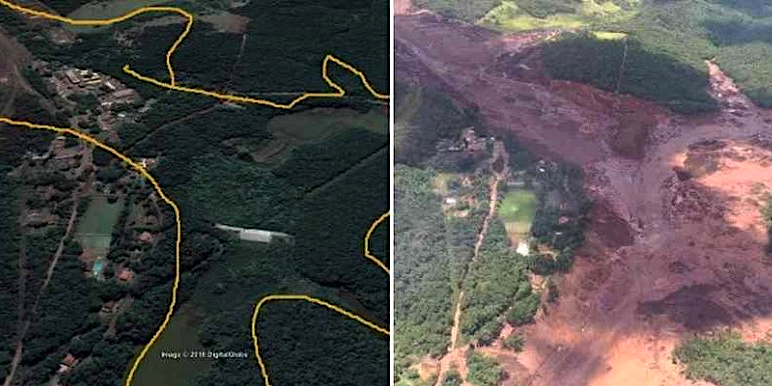
Before and after. (Courtesy of Estado en Minas | Twitter.)
Analysts said the impact of this accident on Vale finances was hard to assess given that the storage area had been inactive and certified as safe by independent auditors.
“The fact that this is an old and unused facility raises questions around how much culpability lies with Vale if the dam did indeed satisfy regulatory requirements,” said Edward Sterck, analyst at BMO Capital Markets. “At the same time, one should question the implications for the pricing of systemic risk within the mining industry, especially with regard to legacy assets constructed to historical norms.”
“True, it is often an engineering challenge to design and maintain the safest-possible tailings dam suitable for a particular mine in a particular terrain; but the science of how to do so is generally well established,” Daniel Litvin wrote for Financial Times. He’s the founder and managing director of Critical Resource, which advises resource firms on sustainability and ‘license to operate’ risks.
The Feijão mine is part of Vale’s southern system operations, which is made up of three mines and two ports and accounts for about a quarter of the company’s iron ore output.
Click here for complete coverage of the dam burst at Vale’s Córrego do Feijão mine.
{{ commodity.name }}
{{ post.title }}
{{ post.date }}
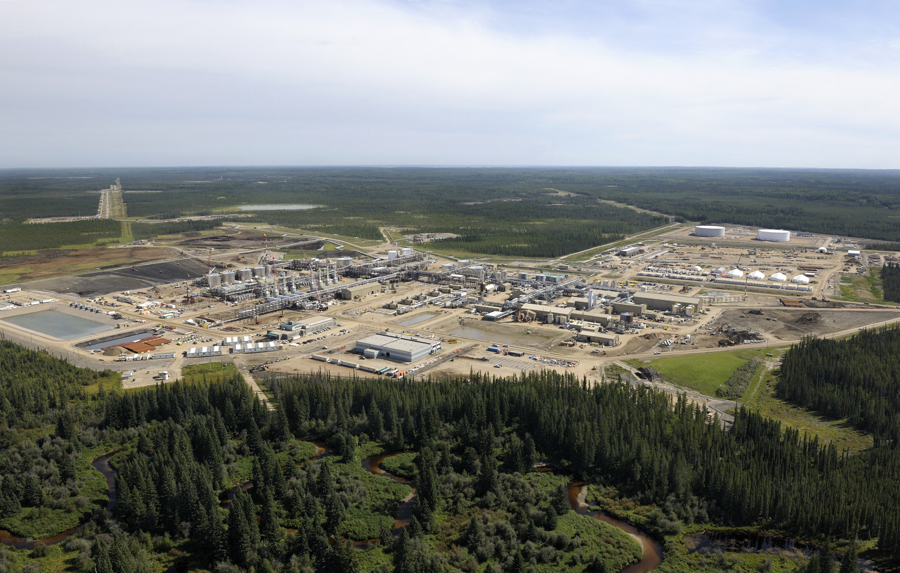
3 Comments
Andrew Reese
I am afraid there are no excuses. Vale was indeed a government company and the responsibility for old dam management is both with Vale and the government. Dam safety and the procedures of a safe shut down in case of failure needs addressing globally and should follow regulations like those in the chemical industry (Safety Integrated systems SIS). The Global Mining Guidelines Group need to address this in their functional safety project and take the topic outside of just the automated mobile mining equipment sector
Dan Gurtler
You might want to look at Vale’s “Golden Shares” and the special rights that come with those; including veto power over nine different possible shareholder actions. That is how Brazil maintains control of the company, even though their ownership of the common has declined. There are only 12 golden shares btw.
Andrés Sorribes Fernandez
no way of fails like this in 21th century industry please…
🙁